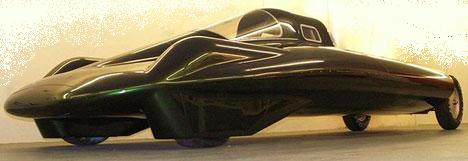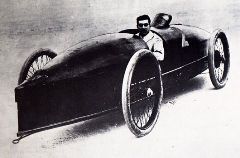 A British-built supercar, dubbed the ‘fastest kettle in the world’, has broken a 103-year-old world land speed record for steam-powered vehicles.
A British-built supercar, dubbed the ‘fastest kettle in the world’, has broken a 103-year-old world land speed record for steam-powered vehicles.
The 25ft-long car reached an average speed of 139.843mph on two runs over a measured mile at the Edwards Air Force Base in California.
Is steam power green?
Steam engines can be made to run very efficiently and can be powered by all manner of fuels – the source of heat can range from wood or coal burners to solar, nuclear or geothermal energy.
The British steam challenge car burns liquid petroleum gas in order to produce three megawatts of heat – the equivalent of 23 cups of tea per second.
While such a hydrocarbon-fuelled external combustion engine produces CO2, the process can be more tightly controlled than in a conventional car engine and the production of CO significantly reduced. Furthermore, since external combustion engines can operate efficiently at much lower temperatures and pressures, the production of other types of pollutants is virtually eliminated.
Steam: Power of the future?
 In the early days cars were mainly fuelled by petrol, diesel and steam. Steam worked by a fuel – any fuel – being used to heat water which in turn powered pistons. The advantages were the power of the engine and that any available fuel could be used. The disadvantage was it took a while “to raise steam”. The steam engine was an external combustion engine whereas petrol was ignited in the piston itself and it became known as an internal combustion engine.
In the early days cars were mainly fuelled by petrol, diesel and steam. Steam worked by a fuel – any fuel – being used to heat water which in turn powered pistons. The advantages were the power of the engine and that any available fuel could be used. The disadvantage was it took a while “to raise steam”. The steam engine was an external combustion engine whereas petrol was ignited in the piston itself and it became known as an internal combustion engine.
The petrol engine was weaker so a gear box was used. A starter handle was required to set the petrol engine going. The boost for the petrol engine began when Bendix invented the starter motor. This meant that petrol cars could be started immediately while steam cars could not; a while later the flash boiler was invented whereby steam could be raised almost instantly but it was too late – cars now ran on petrol.
The British Steam Car Challenge team is not claiming to have designed a practical alternative to the average runabout – its vehicle takes eight minutes to start, weighs three tonnes and needs a parachute to help it to stop. Apart from a few prototype cars based on steam technology that use liquid nitrogen to replace the need for burners and steam, most car manufacturers are focussed on hybrid and fuel cell designs.
0 Comments View now